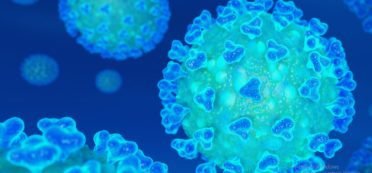COVID 19,Coronavirus disease 2019, the pandemic has locked down the world due to its high transmission and secondary attack rate. The death due to SARS-COV2 (Severe Acute Respiratory Syndrome – Coronavirus 2) is also high making it most dreadful pandemic till date with about 200,000 deaths amongst 3.5 million positive cases of coronavirus around the world till date.
Mode of Transmission
The mode of transmission has made the infection more troublesome. It spreads through the droplets released while sneezing or coughing by an infected person.
When these droplets gain entry into the upper respiratory tract of a healthy person, he/she might have symptoms within 5 to 14 days incubation period.
The severity of the symptoms varies from person to person which depends on many factors, important one being immune system strength.
Patients with co-morbid conditions like diabetes, hypertension, HIV, etc., which affect the immune system tend to worsen faster and the death rate is also high amongst the same.
Many other viruses along with coronavirus result in death the same way. The transmissibility and fatality has made coronavirus outbreak a dreaded pandemic.
After the virus gains entry into the respiratory system, they multiply in the so captured immune cells—white blood cells. The viruses use up the white blood cell machinery to produce their own progeny.
In this process the white cells release numerous inflammatory mediators like Interleukins, tumornecrosis factor, etc., which result in wide spread damage to the lung tissue while attempting to kill the virus. This collateral damage is the main reason for morbidity and mortality related to the coronavirus.
Surplus production of these inflammatory mediators result in a condition called Systemic Inflammatory Response Syndrome, SIRS, which affect the functionality of multiple organs leading to multi organ failure and death.
The kidneys suffer the considerable damage and are the second to go after the respiratory system.
Coronavirus, The heart is not spared and is affected in multiple ways:
- The inflammatory cells cause direct damage to the heart muscle cell leading to myocarditis.
- The inflammation in thelungs, and systemic effects of the mediators result in fluid imbalance and cause hypotension coupled with increased heart rate.
- Increased heart rate in the background of decreased oxygen levels due to lung damage and myocarditis, the heart failure becomes imminent.
- There are a few theories which say that the virus affects the blood clotting mechanism which increases the risk of heart attack due to thrombus formation in the blood vessels supplying the heart.
In the background of SIRS, multiple organs get damages in different ways, but the important one like lungs heart, kidney make it impossible to revive the patient severely affected by the virus. For more information, ask a doctor online at www.healthcaremagic.com.
Related Links:
* HealthCareMagic
* COVID 19 And Diabetes: 5 Steps To Stay Safe!
* Your Questions Related To COVID-19, Answered!
* Coronavirus-2019: Preventive Measures For Caregivers & Pets!
* Coronavirus: Tips And Tricks For Self Home Quarantine
* Dos And Don’ts For A COVID-19 Free Home And A Clean Neighborhood
* Emergency-funds-during-coronavirus-pandemic sprunki horror Endless Fun Awaits!



